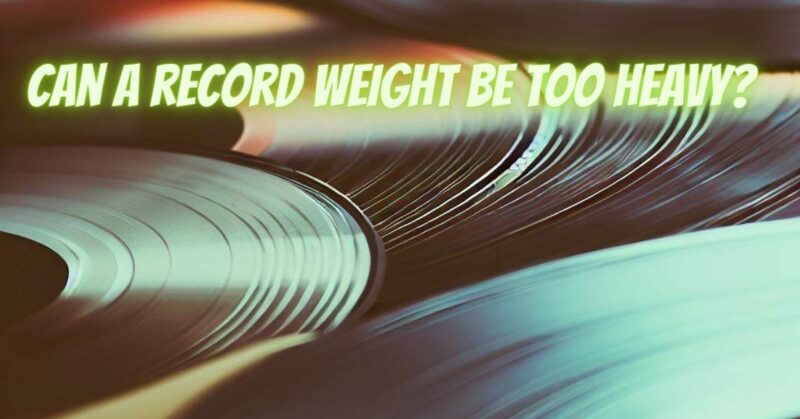Vinyl record enthusiasts understand the delicate interplay between various components in the pursuit of optimal sound quality. Among these components, the record weight, also known as a vinyl clamp or stabilizer, holds a significant role. However, the question arises: can a record weight be too heavy? In this article, we’ll explore the potential drawbacks of using excessively heavy record weights and provide insights into finding the right balance for your analog listening experience.
Understanding Record Weight:
A record weight is an accessory used to improve the contact between a vinyl record and the turntable platter during playback. It helps counteract minor warps, reduce vibrations, and ensure consistent tracking for enhanced audio fidelity. While record weights come in various materials and designs, it’s crucial to consider their weight in relation to their impact on both the record and the stylus.
The Drawbacks of Excessive Weight:
- Stylus and Record Wear: One of the primary concerns with using a record weight that is too heavy is the increased wear on both the stylus (needle) and the record’s grooves. Excessive downward pressure can lead to accelerated stylus wear, as well as groove deformation and wear on the record itself. This can result in a noticeable decrease in audio quality over time.
- Tracking Errors: While a record weight is intended to aid in consistent tracking, excessive weight can have the opposite effect. Too much pressure can cause the stylus to dig too deeply into the grooves, leading to tracking errors, distortion, and even skipping. This can be particularly problematic during passages with dynamic and loud musical content.
- Strain on Turntable Components: Heavy record weights can place additional strain on the turntable’s motor, bearings, and suspension system. This strain might negatively impact the turntable’s performance and longevity.
Finding the Right Balance:
- Manufacturer Recommendations: Always refer to the manufacturer’s guidelines for your turntable, cartridge, and stylus. They provide recommended tracking force ranges that should guide your decisions.
- Using Proper Tools: If you decide to use a record weight, consider using a tracking force gauge to accurately measure the total weight on the stylus. This measurement should include the weight of the stylus, cartridge, tonearm, and the record weight.
- Balancing Audio Benefits: Remember that the primary goal of using a record weight is to improve audio quality. Striking a balance between downward pressure and minimal wear is crucial. Opt for a weight that provides the desired audio enhancement without compromising the longevity of your equipment.
Considerations for Record Weight Usage:
- Record Condition: Heavy record weights can be particularly problematic with older, fragile, or valuable records. These records might be more susceptible to groove damage from excessive pressure.
- Proper Setup: A proper turntable setup, including correct anti-skate adjustment, tracking force, and tonearm balance, is essential. These factors all influence the performance of a record weight.
While a record weight can offer benefits like improved contact and audio quality, using one that is too heavy can lead to a range of issues. The key is to strike a balance between achieving enhanced playback and avoiding potential negative consequences such as increased wear, tracking errors, and strain on turntable components. By following manufacturer recommendations, using proper tools, and prioritizing the longevity of your equipment and records, you can find the right weight that enhances your analog listening experience without tipping the scales in the wrong direction.

